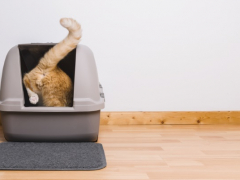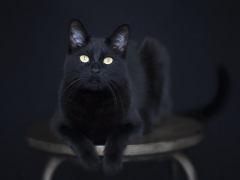
Alexander Sobol / Shutterstock.com
If you’re thinking about getting pet insurance for your cat, you might be wondering how much it will cost. Many factors go into the cost of pet insurance for an individual cat, including their age, health status, breed, and where you live. For instance, did you know that some cat breeds cost more to insure than others?
Pet insurance can bring a lot of peace of mind that you will be able to afford your cat’s medical care in the event of an emergency, accident, or severe illness. The cost of veterinary care continues to rise every year. This is partly due to inflation, but it’s also because veterinarians can now provide a similar level of care for pets that humans receive thanks to advances in technology, research, and medications.
Let’s learn all about pet health insurance, including how it works, what to look for in an insurance policy, and how to choose the best pet insurance for your cat.
How Pet Insurance Works
Before buying pet insurance for your cat, it’s helpful to understand how it works—it’s not the same as human health insurance. Pet insurance mainly covers illnesses, accidents, and injuries. Examples of covered conditions include upper-respiratory infections, allergies, diabetes, kidney failure, and a broken leg.
Pet insurance does not pay for well-pet services unless you buy a specific insurance plan that includes wellness coverage. Most general pet insurance plans do not cover annual exams, vaccines, dental cleanings, or flea and tick preventives. Some plans do include both accident/illness and wellness coverage, but this will be spelled out very clearly by the plan.
You can usually purchase a wellness “rider” to add on your pet insurance policy that covers a portion of wellness costs throughout the year. It’s also possible to purchase standalone wellness plans. These do not offer coverage if your cat becomes sick or injured, but they reimburse you a set amount for vaccines and other well-pet services. Wellness plans can be helpful for people who have trouble budgeting throughout the year, although the cost savings for wellness plans are often minimal.
Premiums, Deductibles, and Payouts

If you have a purebred cat like this Burmese, choose an insurance policy that does not exclude hereditary conditions. Elpisterra / Shutterstock.com
Your premium is the cost to purchase insurance for your cat for one year. You usually can choose to pay in one lump sum (an annual premium) or smaller monthly payments. If your cat becomes sick or injured, you can visit any vet you choose for treatment. Pet insurance typically does not cover costs up front. You pay your vet bill in full at the time of service, then later submit a claim to the insurance company for reimbursement.
The deductible is the amount you pay out of pocket before being reimbursed for covered expenses. Some providers offer tiers of deductible: low, mid-range, and high. The higher your deductible, the lower your annual premium will be.
Depending on the company, the deductible will either be annual, per condition/incident or per visit. The best option is annual—once you reach the deductible, all future bills are eligible for reimbursement, no matter how many times your cat goes to the vet.
“Per condition/incident” means you only pay the deductible once in a calendar year for the same problem. For instance, if your cat has skin allergies and visits the vet four times in a year to treat them, you only need to reach the deductible once and then all future care is covered.
“Per visit” deductibles are not a great option. Every time your cat goes to the vet you must pay the deductible before anything will be covered.
The payout is how much money you will be reimbursed by the insurance company after you pay your deductible. Some pet insurance providers offer different payout tiers: low (for instance, 80 percent), mid-range (90 percent) and high (100 percent). In general, the higher your payout percentage, the higher your annual premium. Most insurance companies cap payouts at a certain dollar amount annually. A higher total annual payout will result in a higher annual premium.
Top Things to Know About Pet Insurance

Persian cats usually cost more to insure than some other breeds. Beach Creatives / Shutterstock.com
Navigating pet insurance is tricky. You want to be sure that the policy you buy is going to be worth it if you ever need to use it. Not all pet insurance companies and plans are the same, so it’s important to understand what is covered—and what isn’t—before you purchase a plan. Here are some of the most important things to know about pet insurance:
Some Cat Breeds Cost More to Insure Than Others
It can cost more to insure certain cat breeds that are prone to health issues. Some pet insurance policies even exclude certain diseases and conditions that are genetically linked to specific breeds, for instance, osteochondrodysplasia in a Scottish Fold or polycystic kidney disease (PKD) in a Persian. If you own a purebred cat, be sure to choose a pet insurance policy that does not exclude hereditary conditions in purebreds.
Some cat breeds that cost more to insure than others include:
- Abyssinian
- Bengal
- Burmese
- Devon Rex
- Persian
- Maine Coon
- Munchkin
- Ragdoll
- Savannah
- Scottish Fold
- Siamese
- Sphynx
Pet Insurance Is Cheaper for Younger Cats
Kittens with no known health problems are generally the least expensive to insure. The older a cat is, the more expensive it will be to insure them. This is because older cats tend to develop more health issues like arthritis, cancer, and kidney problems. In addition, if your senior cat has never been insured, any pre-existing health conditions they already have will not be covered.
Some Things Are Not Covered by Pet Insurance
Before purchasing any pet insurance policy, know what is covered and what is not. If anything is unclear, call the company and ask them to clarify. Some policies exclude major issues like cancer; other policies cover them. Some insurance plans might exclude or limit the benefits for cancer treatment, but offer cancer riders you can add on to your policy for an additional fee.
Is Pet Insurance Worth It?
Whether you choose pet insurance for your cat is a personal choice. Insurance is always a gamble. You might never need it, but if you do, you’ll be glad you have it. Having pet insurance gives you a lot of peace of mind if your cat gets sick or hurt. Some cat owners choose to put aside some money every month instead of buying pet insurance. This works out great for some people, but a major veterinary issue can cost thousands to treat.
Always read (and re-read!) the fine print before choosing a pet insurance plan for your cat, and don’t hesitate to shop around and compare different companies and policies. For a list of pet insurance providers, visit the North American Pet Health Insurance Association.







